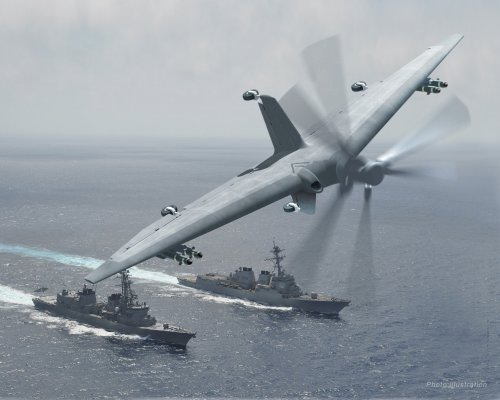So Lockheed and NG both bid tailsitters
In the first phase of the TERN program AeroVironment and Northrop Grumman experts studied designs for an operational TERN UAV, and began planning for a prototype flight demonstration in 2017. The other three DARPA TERN Phase I contractors are Carter Aviation Technologies LLC in Wichita Falls, Texas; Aurora Flight Sciences Corp. in Manassas, Va.; and Maritime Applied Physics Corp. (MAPC) in Baltimore.
Aurora bid a fixed wing, non VTOL aircraft with a ship mounted recovery device, and Carter obvioulsy bid a gyroplane. Does anyone know what the AV and MAPC bids looked like?
It is interesting to note that AV had tested a tailsitter back in the day as well, Sky Tote IIRC.
The tailsitter configuration makes a lot of sense in terms of simplicity. OTOH the disadvantages include:
- Relatively high installed power, much higher than required for a platform that should feature long endurance.
- the barn-door sized wing makes recovery in cross winds VERY challenging. This is particularly true in the wake of a destroyer's superstructure. Maybe they're limited to a certain sea state, like < 4?
- related to the previous, stability of the configuration upon landing on a pitching and heaving deck. The wheel spacing (wheel base?) is limited and the vehicle could easily tip over. OTOH, maybe they managed to lower the CG quite a bit.
- I am puzzled by the weapons installation far out on the wing. I understand that they can only be there because of the large diameter props, but in the worst case scenario you could have something like 200 lbs still hanging on one side and 200 lbs gone on the opposite side (those missiles look like Hellfires). That's a lot of weight at a long moment arm to have to counter using cyclic control on the props (presumably).
anyway, good for NG for snatching the contract. I hope they don't run into funding/technical problems and we get to see a prototype.













